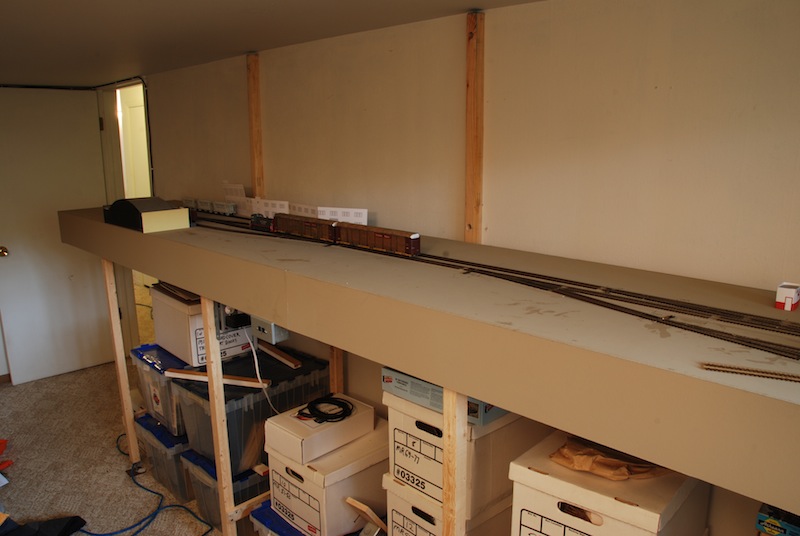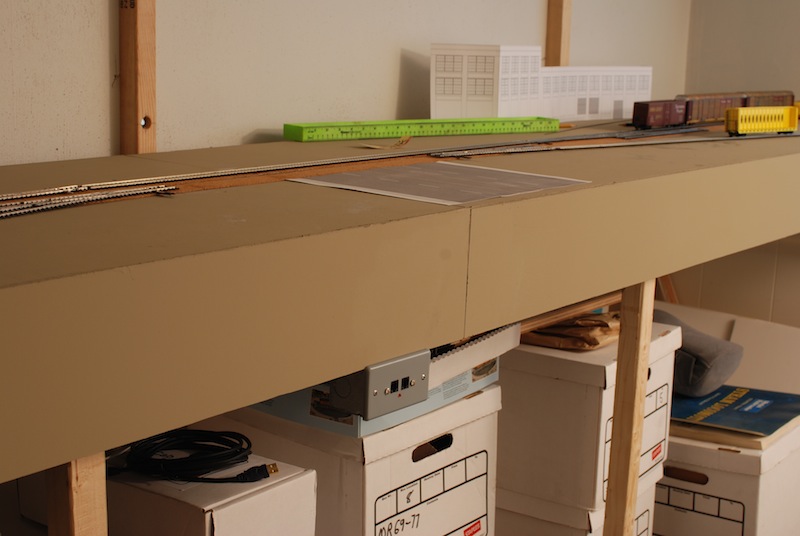12-18-2010, 06:54 AM
Great info guys!
Here is more stuff I left out. The benchwork is all cut from 3/4" birch plywood. The wood sat in the basement (layout location) precut for over 6 months before being assembled. The sides of the benchwork are 4.5" deep, with a laminate of masonite for the facia 6" deep. After building the benchwork all wood was painted including the underside to seal it. The track was not ballasted yet. The rails were left unsoldered from adjoining rails because I wanted gaps to control the rail expansion. The specific affected track length is 26". The track was straight, no curve. The track sits on gasket cork that was painted prior to laying the track to seal it.
The benchwork is actually made up of two free-mo modules 24"x7.5' each. The buckle did occur at the spot where the two modules join. The track at this point is a butt fit to the edge of each module, with a slight gap for expansion (the width of a dremel cutoff wheel). There is a parallel track 2" away that crosses the same modules that is unaffected.The modules are connected with 3 through bolts, which are still tight.
From previous discussion, this sounds like it would be the benchwork rather than the rail. My question is wouldn't the paint have sealed the wood enough to curtail the affects of heat and humidity?


Here is more stuff I left out. The benchwork is all cut from 3/4" birch plywood. The wood sat in the basement (layout location) precut for over 6 months before being assembled. The sides of the benchwork are 4.5" deep, with a laminate of masonite for the facia 6" deep. After building the benchwork all wood was painted including the underside to seal it. The track was not ballasted yet. The rails were left unsoldered from adjoining rails because I wanted gaps to control the rail expansion. The specific affected track length is 26". The track was straight, no curve. The track sits on gasket cork that was painted prior to laying the track to seal it.
The benchwork is actually made up of two free-mo modules 24"x7.5' each. The buckle did occur at the spot where the two modules join. The track at this point is a butt fit to the edge of each module, with a slight gap for expansion (the width of a dremel cutoff wheel). There is a parallel track 2" away that crosses the same modules that is unaffected.The modules are connected with 3 through bolts, which are still tight.
From previous discussion, this sounds like it would be the benchwork rather than the rail. My question is wouldn't the paint have sealed the wood enough to curtail the affects of heat and humidity?
John


